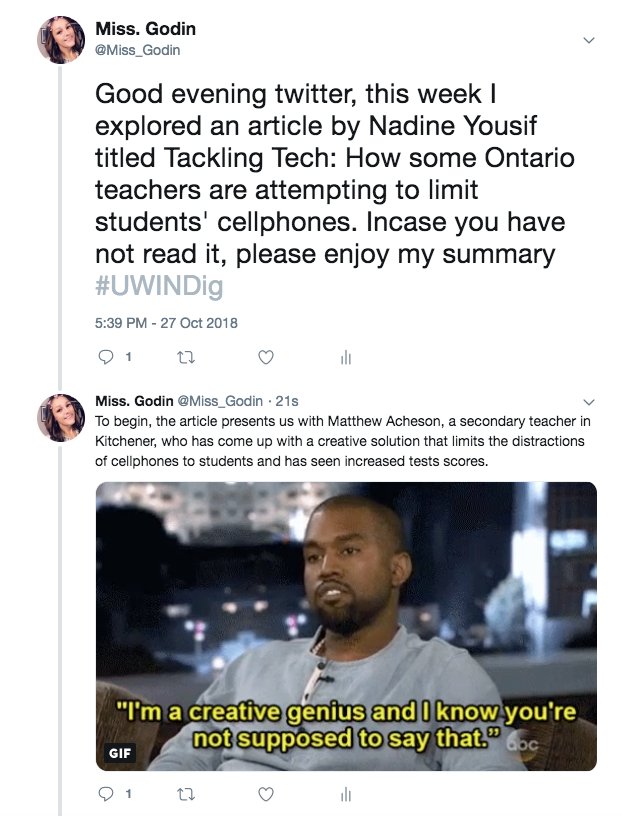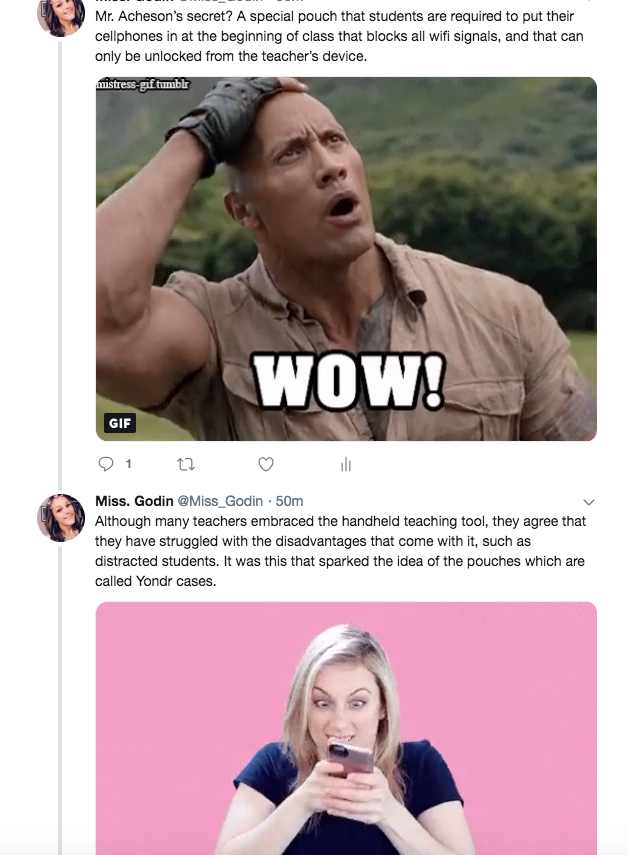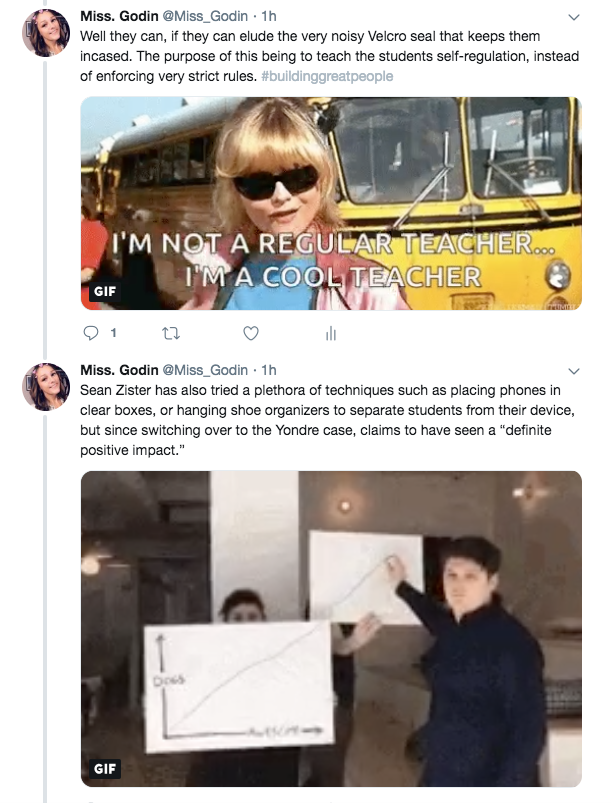In the article How some Ontario teachers are attempting to limit student’s cellphone use, author Nadine Yousif explores options that some teacher have taken to limit the distractions from cellphones in the classroom. You can explore a summary of the article through my twitter thread (it has gifs)!


One suggestion was to completely ban cellphones over all, however, I think this technique may be only be beneficial to certain teachers. When I was interning in a grade 9 art class before teacher’s college, cell phones were almost a necessity in class to access reference pictures that were needed for a drawing projects, or to research an artist. Cell phones were also encouraged (during independant studio time) because as an artist listening to music is a useful tool that allows you to “get in the zone” and gets the creative thoughts flowing. Personally I’ve worked on a drawing for 6 hours plus, and time has flown by because I was distracted by music and it really helped me get things done. Of course when we were not doing studio work and I was teaching a lesson, often students were distracted by their devices. In this case, I do not think a complete cell phone ban would be appropriate, however stricter rules did need to be enforced for when cell phone use was unsuitable.

However, through my time in an elementary school, I’ve found the students aren’t as dependable of their devices as those highschool kids were, so actually locking up their devices would be unnecessary. If I did catch students with their phones out, simply saying “put it away” was usually enough to have the students comply.


This Yondre case may be a great solution for teachers though, as the teacher gets to control when the phones can be used. You can ensure phones are away during instructional time, and can unlock phones if they are needed for part of a lesson such as researching, or using calculators or maps apps. Allowing them to use their devices in class can be beneficial, and having it locked away in their desk would save them all from rummaging through their bags or going to their lockers to retrieve their devices when allowing them to use it. This Yondr case may work for these scenarios, but I don’t think it will necessarily ensure that the students are using the cellphones appropriately. I think this strategy would be most beneficial for schools that are not allowing any personal devices to be used during class at all.


It is a difficult dilema as cell phones can access so much information when used correctly, but how do you ensure all 20-30 students are indeed using them for educational purposes and not on social media apps instead of doing their work. I believe that if personal devices are allowed in class (when instructed to use them) there needs to be strict rules implemented prior to the lesson that gives the students clear guidelines how they will be used and the consequences if used inappropriately.
My ideas and thoughts have not really changed since reading the article, however the idea of a case or secure spot for students to drop their phones off did intrigue me. If you had something like a hanging shoe rack, like one teacher had, with labeled slots, all students could put their phones in there at the beginning of class. With it designed this way, you know the student is getting their phone only, so there wouldn’t be a theft issue which has happened in our school before with phones being left in desks and lockers. All phones are easily accessible for when phones are permitted to use. I think completely banning phones tells the students that you don’t trust them, and I think if you build that trusting relationship with them first, you won’t need to ban all devices, because they are more likely to stay engaged with a class they enjoy and a teacher they have a relationship with.
-Paige Godin
